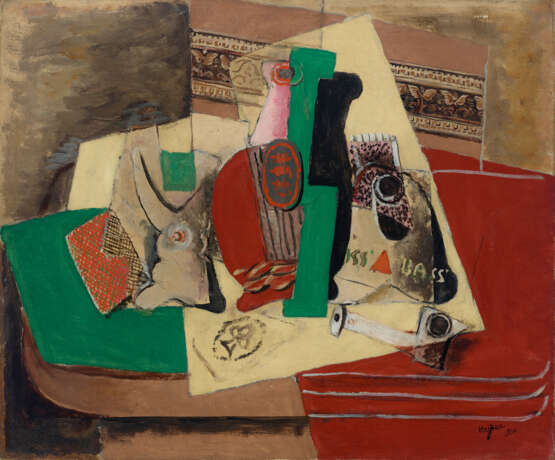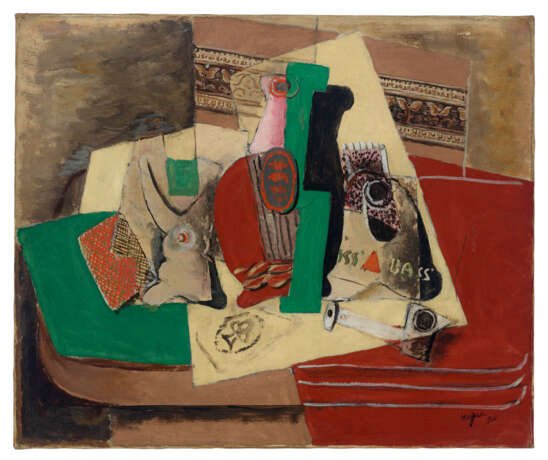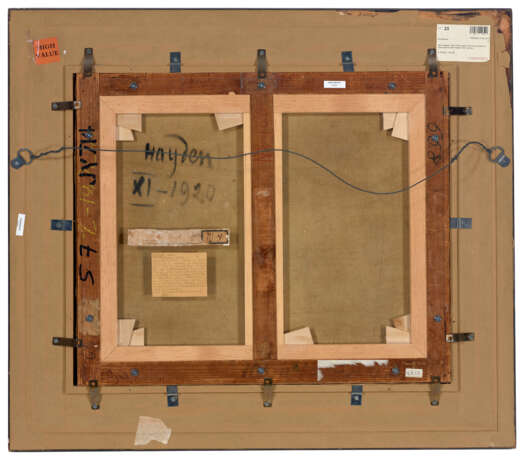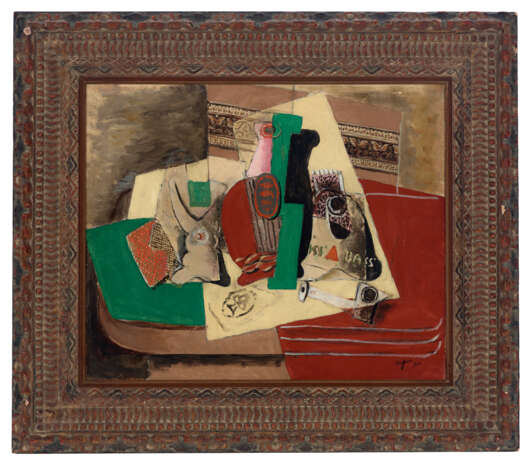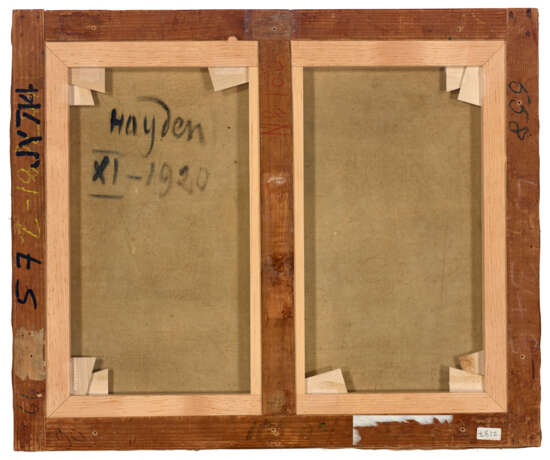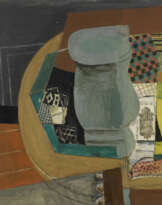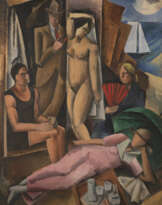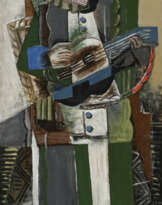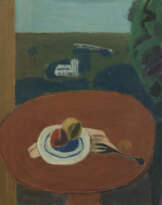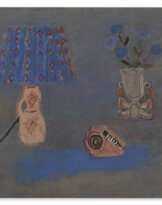ID 1178545
Lot 109 | Henri Hayden (1883-1970)
Estimate value
€ 50 000 – 70 000
Nature morte à la bouteille de Bass
signé et daté 'Hayden 1920' (en bas à droite); signé et daté 'Hayden Xl 1920' (au revers)
huile et sable sur toile
45.8 x 55 cm.
Peint en novembre 1920
signed and dated 'Hayden 1920' (lower right); signed and dated 'Hayden Xl 1920' (on the reverse)
oil and sand on canvas
18 x 21 5⁄8 in.
Painted in November 1920
Provenance
Galerie L'Effort Moderne (Léonce Rosenberg), Paris.
Vente, Sotheby Parke Bernet & Co., Londres, 2 avril 1981, lot 343.
Vente, Sotheby's, Londres, 3 décembre 1986, lot 233.
Vente, Christie, Manson & Woods Ltd., Londres, 28 novembre 1989, lot 325.
Acquis au cours de cette vente par le propriétaire actuel.
Further details
Cette œuvre sera incluse au catalogue raisonné de l’œuvre de cet artiste en cours de préparation par le Comité Hayden.
Arrivé à Paris en 1908, le jeune peintre polonais Henri Hayden fait la découverte de l’œuvre de Paul Cézanne cette même année, à l’occasion de la grande rétrospective au Salon d’automne honorant la disparition du maître d’Aix. Son impact est profond et durable, et teinte le travail du peintre jusqu’à son adhésion relativement tardive au cubisme, en 1916. Comme l’explique le critique André Salmon: «Hayden adhéra au cubisme, ayant déjà produit beaucoup, pour avoir beaucoup acquis sur lui-même. Il y adhéra quand son esprit méditant lui démontra que le cubisme n’était, en somme, que l’aboutissement un peu plus prompt, de ses propres recherches» (cité in C. Zagrodzki, Hayden, Paris, 2005, p. 51). La frontière entre le style cézannien d’Hayden et le cubisme analytique est en effet mince, et la transition s’effectue donc de façon fluide et naturelle. Rapidement les tons s’assombrissent, les paysages cèdent la place aux natures mortes qui, à l’image de la présente œuvre, se construisent par la mise en contraste d’aplats et de zones traitées à l’aide de petites touches courtes et dynamiques. Esprit libre et artiste en perpétuel évolution, Hayden s’éloigne définitivement du cubisme dès 1921. Peint en 1920, Nature morte à la bouteille de Bass est à ce titre un témoignage précieux de la période fugace qui constitue l’apogée de son œuvre.
When he arrived in Paris in 1908, the young Polish painter Henri Hayden discovered the work of Paul Cézanne during the exhibition of the Aix master’s work organised a year after his death. The impact of this encounter would be deep and lasting, shaping Hayden’s work until his relatively late adhesion to Cubism, in 1916. As the art critic André Salmon explained: “Hayden joined Cubism, following an already productive period during which discovered much about himself. His move to join the movement came when his contemplations let him to realise that Cubism was, in short, simply a slightly faster conclusion to his own personal investigations” (cited in C. Zagrodzki, Hayden, Paris, 2005, p. 51). The frontier between Hayden’s cézannian style and analytic cubism was in fact narrow, and the transition was therefore fluid and instinctive. The tones quickly darken, the landscapes give way to still lives which, as in the present work, are built with contrasted swathes of colors and zones treated with short and dynamic touches of paint. Independently-minded and in perpetual evolution as an artist, Hayden moved definitively away from Cubism in 1921. Painted in 1920, Nature morte à la bouteille de Bass is a rare work from the fleeting period considered the height of his art.
| Artist: | Henri Hayden (1883 - 1970) |
|---|---|
| Applied technique: | Oil on canvas |
| Genre: | Still life |
| Auction house category: | Paintings, Watercolors, Drawings, Paintings |
| Artist: | Henri Hayden (1883 - 1970) |
|---|---|
| Applied technique: | Oil on canvas |
| Genre: | Still life |
| Auction house category: | Paintings, Watercolors, Drawings, Paintings |
| Address of auction |
CHRISTIE'S 9 Avenue Matignon 75008 Paris France | ||||||||||||||
|---|---|---|---|---|---|---|---|---|---|---|---|---|---|---|---|
| Preview |
| ||||||||||||||
| Phone | +33 (0)1 40 76 85 85 | ||||||||||||||
| Fax | +33 (0)1 40 76 85 86 | ||||||||||||||
| Conditions of purchase | Conditions of purchase | ||||||||||||||
| Shipping |
Postal service Courier service pickup by yourself | ||||||||||||||
| Payment methods |
Wire Transfer | ||||||||||||||
| Business hours | Business hours
|
